Q&A with The Canadian Backcountry Trails Preservation Society
Fed up with a growing lack of trail maintenance in our iconic National Parks, a group of experienced backpackers has formed a nonprofit to preserve and protect safe access to remote wilderness areas
Go Outside subscribers receive advice, stories, trip reports, interviews, reflections, opinions, Q&As, and outdoorsy goodness in their inboxes. Contributions from readers like you make this newsletter possible.
If you’ve spent time in the backcountry in recent years, you, like us, have probably noticed downed trees, washed out bridges and overgrown trails. This week, we’re bringing you a Question & Answer with the The Canadian Backcountry Trails Preservation Society, a new non-profit society that aims to address this growing issue. Founded by avid outdoors folk with a lot of backcountry experience, you can learn more about their important work below, and at www.SaveTheTrails.ca.
Washed out bridges were a common sight when Cailynn hiked the remote North Boundary Trail in Jasper National Park in 2017.
Q: You recently launched The Canadian Backcountry Trails Preservation Society. Tell us about how this came about.
Over the past several years, each of us had done long backpacks on some of the more remote trails in Banff and Jasper and we were struck by the deteriorating condition of some of the trails, including washed-out bridges, poor or non-existent signage, trails crossing meadows that have been swallowed by willows, etc.
We found each other through the backpacking community and once we started talking realized we were all fed up with what we saw as deliberate choices being made by Parks Canada (this has been confirmed by some documents we obtained through an access to information request) to not properly maintain backcountry trails and decided we wanted to do something about it. In addition, some of us have backpacked in major national parks in the US (e.g., Glacier and Yellowstone) and felt that the quality of the trails in our own parks compares quite poorly with the US parks.
Q: What does the society ultimately aim to do?
Ideally, we’d like to see Parks Canada get properly funded by the federal government and to make trail maintenance and restoration a priority. Alternatively, if Parks can’t or won’t do the work themselves, we would like them to allow qualified volunteer groups to work on trails in Banff and Jasper, the way they do on trails in Alberta provincial parks, on provincial Crown lands and throughout British Columbia.
Photo examples of trail neglect on the Society’s website
Q: Can you give us a sense of timelines here? Your board members have been exploring the backcountry for a long time. When did you start noticing that trails in Banff and Jasper National Parks were in bad shape to the point they were becoming impassable?
In the past 10 years or so. The documents we obtained through our access to information request confirm that in Jasper decisions were made by Parks Canada in 2008-09 to, for example, not rebuild bridges on certain trails when the existing ones wash out, thereby effectively decommissioning them. Sure enough, since the early 2010s several bridges have washed out and not been rebuilt.
Q: Can you name some of the trails that are now unwalkable? What have board members experienced on these trails?
In Banff, the Castleguard Meadows trail hasn’t been maintained for several years now and is virtually impassable. One of us did it in 2017 and spent hours bushwhacking before finding the last stretch of trail up to the pass. It was so bad we walked out down the Saskatchewan Glacier. Howse Pass is another trail in Banff which is so choked with deadfall that the “trail” is virtually impassable and most people walk on the river flats when the water is low enough that you can ford the river when you need to.
In Jasper, a bridge washed out in 2016 on the historic Athabasca Pass trail such that hikers can no longer get beyond the first 15 kms or so. The same thing is happening on the iconic North Boundary Trail, with important bridges having washed out and deliberately not being rebuilt. A large section of the South Boundary trail (>50 kms) was impassable for several years because of a fire which resulted in deadfall choking the trail, which was not cleaned up by Parks. Recently, the bridge over the Brazeau River washed out making the popular Jonas Pass-Poboktan Pass-Nigel Pass loop very difficult. While this bridge is slated to be rebuilt, for several years backpackers have been forced to ford the Brazeau, not a straightforward task.
Generally, in both Banff and Jasper many trails are getting overgrown with willows (in some cases chest or head-high) so it is almost guaranteed you are going to lose the trail and, in many cases, have a very difficult time finding it again. Added to this are trail signs which have fallen over or are so battered they cannot be read.
Q: How are hikers finding out about the state of these trails? (I'm thinking about a backpack I did in 2023 that was surprisingly difficult due to downed trees and a rather hole-y bridge.)
A lot of folks these days research trails on the internet and there are lots of forums where people describe hikes they’ve done. There are also several YouTube channels devoted to backpacking which show the conditions of some of these trails in gory detail. If the trail was in terrible shape, they usually say so. But honestly, sometimes you just don’t know until you get out there.
A heavily damaged trail sign, photo courtesy of the Canadian Backcountry Trails Preservation Society
Q: The society writes on its new website that, "Failure to maintain hundreds of kilometres of trails in Banff and Jasper is slowly but surely denying Canadians access to the wildest and best parts of these national parks. Moreover, we believe the backcountry trail systems in Banff and Jasper are, in their own right, artifacts of significant cultural value and heritage." Talk to us more about this. What does it mean for both yourself and future generations that more and more remote backcountry trails are becoming impassable?
Not surprisingly, the trails that are in the worst shape tend to be those that are remote, long and often arduous. But they are all the more rewarding because of it. And in many cases, they may be remote today but historically were really important. The best examples are Howse Pass in Banff and Athabasca Pass in Jasper, each of which was “discovered” by David Thompson during the fur trade era as ways to connect the river systems east of the Rockies to the Columbia in B.C. Each is a National Historic Site, in addition to being located in national parks. Yet both are extremely difficult if not impossible to access.
Similarly, the long trails in the Front Ranges of Banff such as the Red Deer River and Clearwater River valleys were used by the Stoneys as routes to move from the Morley area to hunting grounds near the Kootenai Plains on the North Saskatchewan. The Red Deer River corridor through Banff was a trading route for First Nations on both sides of the Rockies.
It is remarkable to us that you can drive one hour from Calgary to the Upper Bankhead parking lot at Lake Minnewanka, start walking up the Cascade Valley and literally disappear into the wilderness for a week or more if you want to. While they are not as accessible, in Jasper both the North and South Boundary trails also offer premier wilderness hiking experiences. Losing these trails would be a tragedy, in our view. It is especially disheartening given that long-distance hiking in places like the US (i.e., the “thru-hiking” craze) and Europe has become very popular, but here in Canada we are losing such spectacular routes.
We are biased, we know, but with the current upswelling of patriotism in Canada (in response to the new administration of our erstwhile friend south of the border), it is hard to think of institutions we can and should be more proud of than our beautiful national parks. Banff and Jasper in particular, Banff being our first national park and Jasper one of the largest. The deteriorating state of backcountry trails in these parks is therefore especially heartbreaking. Moreover, it appears that more Canadians will be foregoing vacations abroad and instead recreating in Canada, meaning there will be even more pressure on our national parks. We need these trails!
Hiking through downed trees, photo courtesy of the Canadian Backcountry Trails Preservation Society
Q: Last summer, Jasper National Park and the townsite of Jasper experienced a devastating wildfire that destroyed a third of the structures in town and raged through the Park. With efforts to rebuild homes and businesses underway, is the Society hoping deteriorating trails will be looked at as part of efforts to rebuild?
Definitely. We understand the priority is rebuilding people’s homes in Jasper townsite, but Jasper’s economy is based on tourism and a big part of that is camping and hiking in the summer. We know that some trail infrastructure (bridges and campsites) were destroyed by fire and will have to be rebuilt and we hope that others that were not burnt but need rebuilding can be done at the same time.
Q: A federal election is imminent. What does the Society have planned to raise this issue to Parks Canada and the federal government in the coming months?
We just created a petition through Change.org that can be accessed through a link on our website and we hope to be able to present it—with thousands of signatures!—to Parks Canada. Some of us are also trying to talk to MPs and candidates in all the parties to bring this issue to their attention. With the two major parties now competing with respect to who is best to stand up to Trump and protect Canada, they should be made to understand that protecting Canada must include protecting our iconic national parks.
Q: How can people reading this get involved? If they have photos or stories of their own of hiking poorly maintained trails in our National Parks, what should they do?
Yes, we have a page on our website of photos showing washed-out bridges, overgrown trails, etc. We would love for people to send us pictures of particularly egregious examples of poor maintenance in the Banff and Jasper backcountry. We also gratefully accept donations through the website.
A couple more photos from Cailynn’s North Boundary Trail adventure. A handful of warden cabins serve as a reminder that this area was once used much differently than it is today.

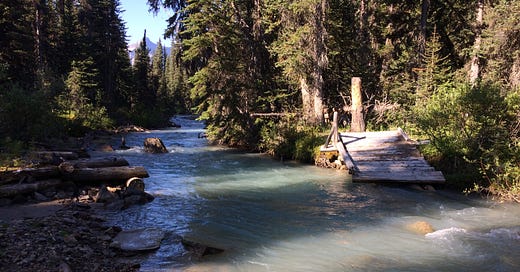




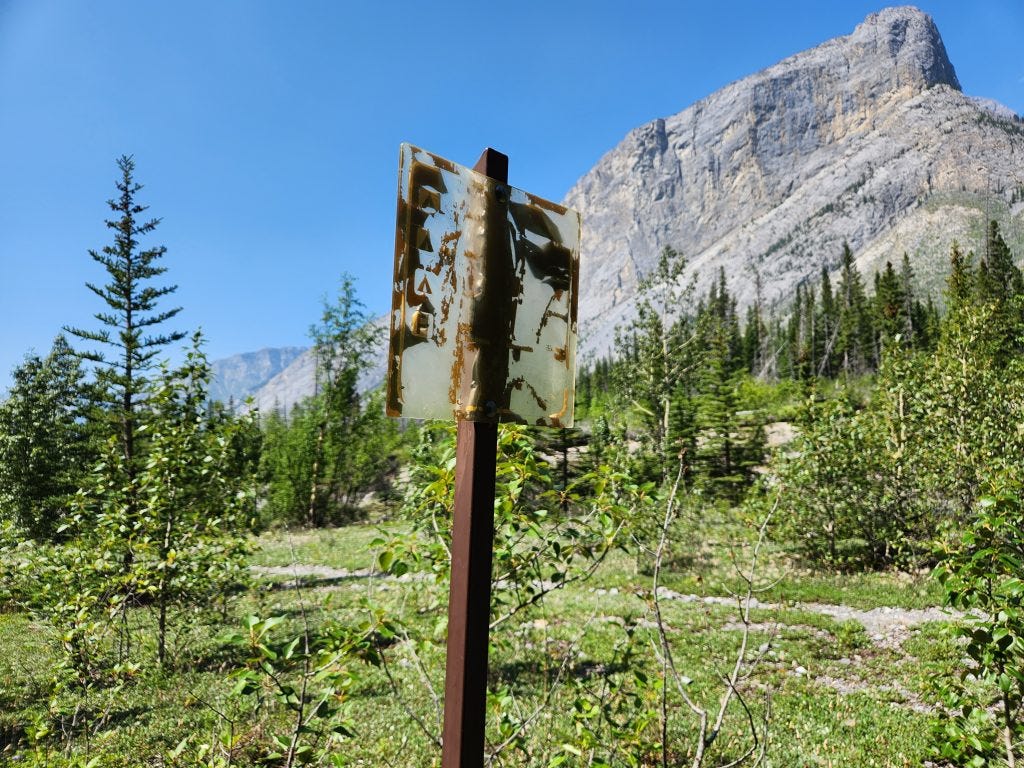
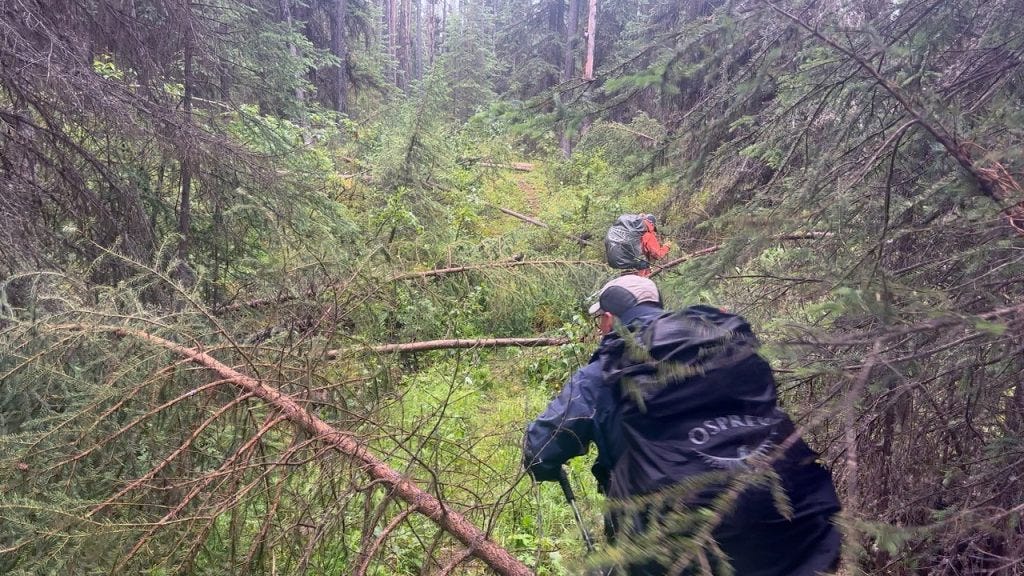
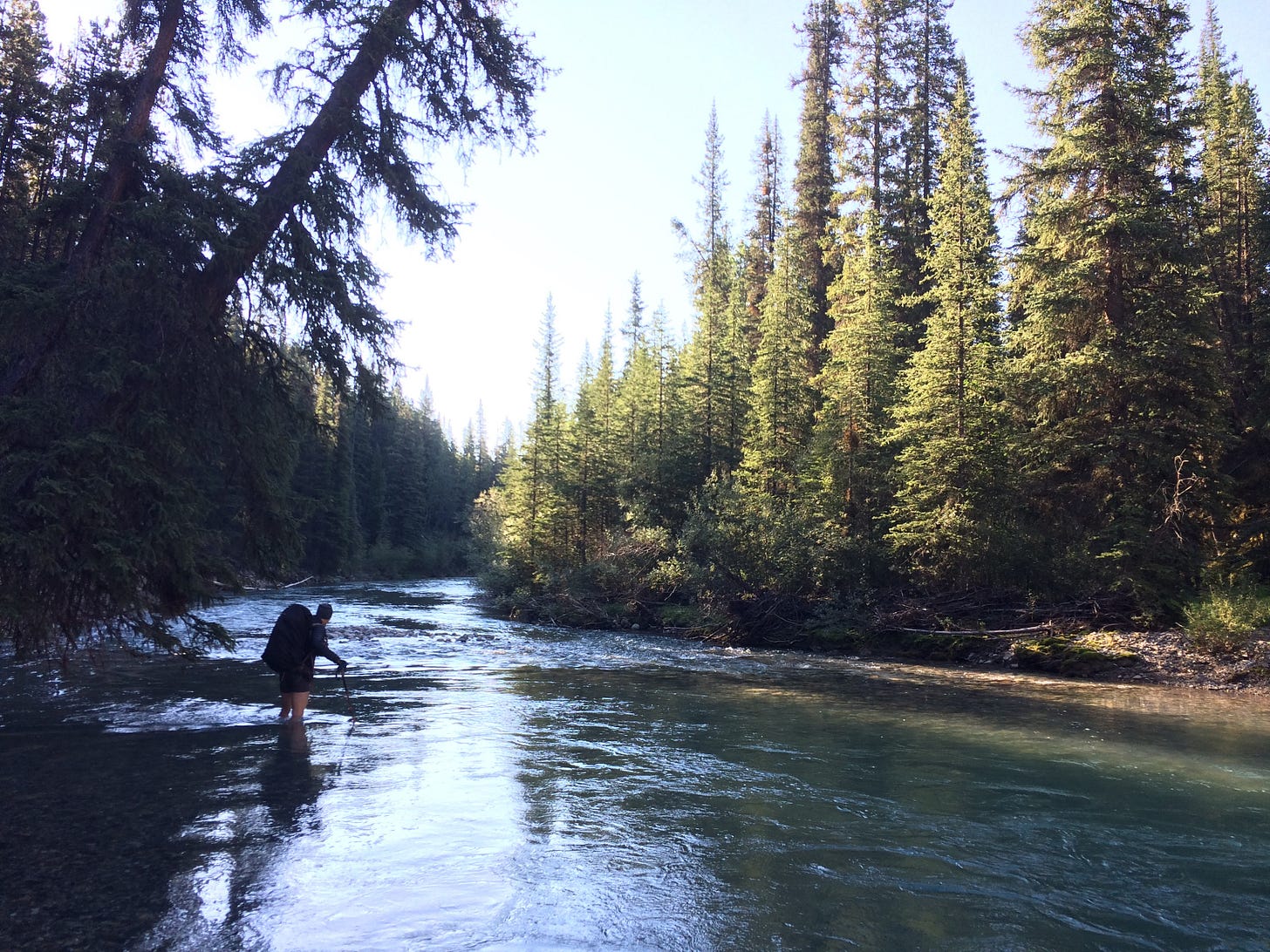
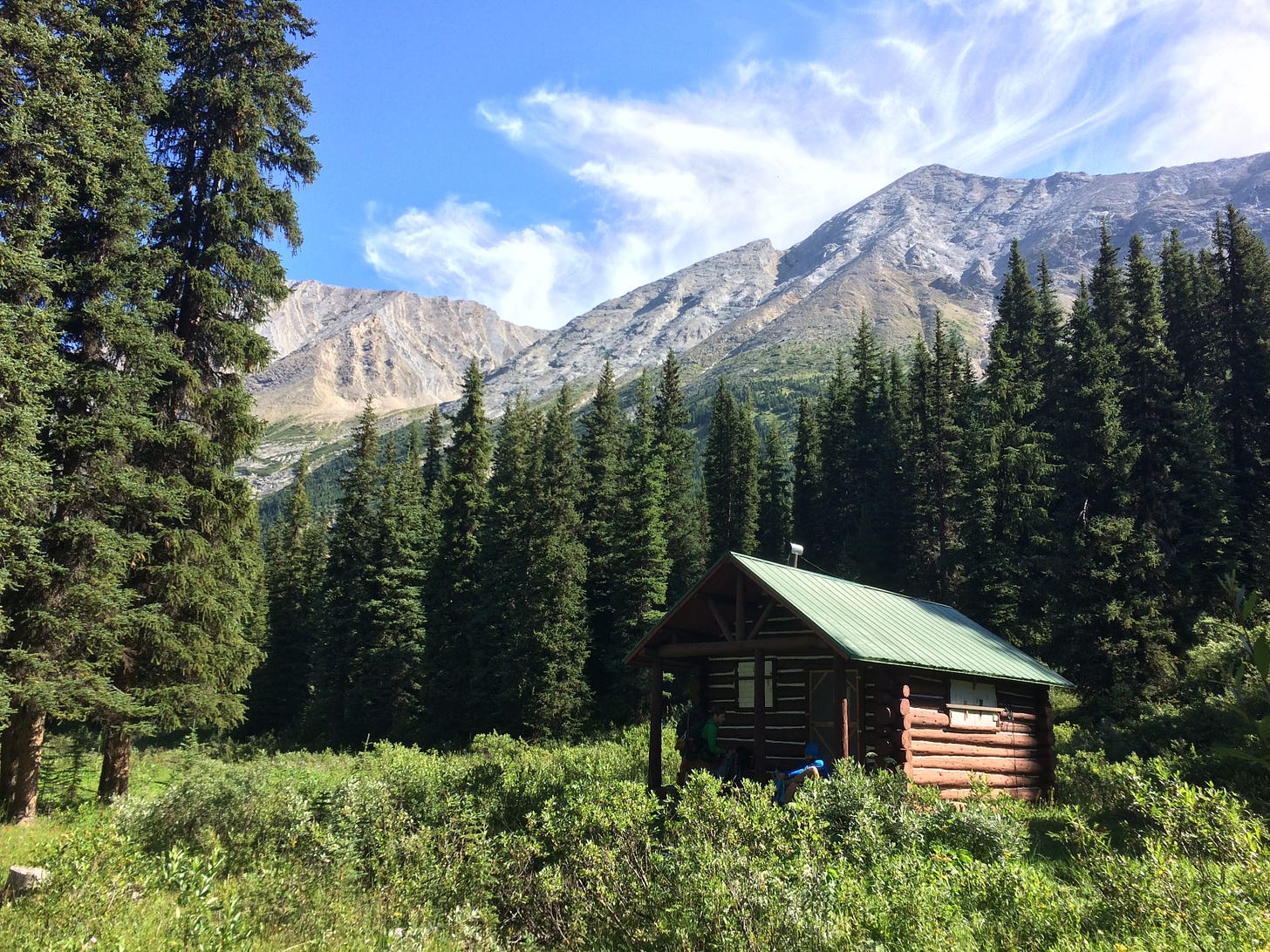

Thanks for this article. this has been the elephant in the room with regards to outdoor recreation and Parks Canada. As a Canadian, you may think the national parks belong to you. They don't. They belong to the bureaucrats who assiduously are working to keep us out. Its not just the remote long distance trails but almost any trail that isn't Johnston Canyon or the Rockwall. Parks spent millions for upgrading parking at Emerald Lake, but hike 500 metres and the trails haven't been maintained for years. It's not budgets as much as a mentality among the senior bureaucrats that the parks have to be protected from the people.
Thanks for the article. I think it’s important for grassroots organizations to be more involved in land stewardship and nice to hear of organizations making an effort.
I’m curious as to why Parks Canada has decided to stop maintaining these areas, I didn’t see any answer in your article.
Years ago I did a canoe trip into a remote area. There was a similar organization cutting and re-establishing ancient trails. I thought this was great when I first heard about it. When I was getting permission from parks to do my trip (10 days, starting by float plane) Parks asked for my itinerary. When I provided it to them I was informed that I had to make some changes, that the trails which were being cut were unauthorized. Some went through environmentally sensitive areas and others through culturally important areas. Parks were working hand-in-hand with native communities and respective ecologists to create a working plan for the area but the non-profit was focused on their own agenda based on their recreational interests.
What steps does the backcountry trails preservation society take to ensure they are not working against the better interests of ecological and cultural needs?